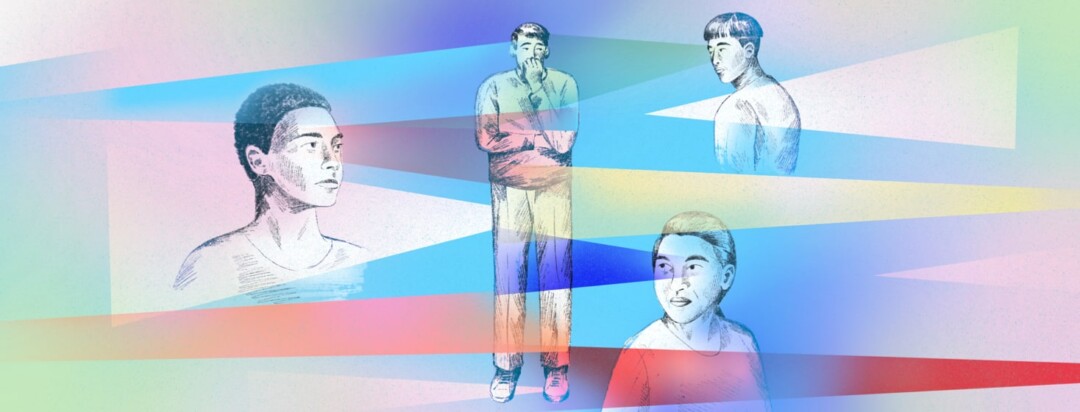Surprising Risk Factors for Type 2 Diabetes
A common question among people who are diagnosed with type 2 diabetes (T2D) is "Why me?" or "How did I get diabetes?" Other reactions include guilt or shame about a T2D diagnosis. The description of T2D as a "lifestyle disease" gives the impression that you caused this to happen.
However, there are a lot of risk factors for T2D – more than many people realize. Understanding those risk factors can help you process a diagnosis and reduce the shame or guilt around developing type 2 diabetes.
Common risk factors
Traditional risk factors you read on websites like the American Diabetes Association include:1,2
- Family history
- Race and ethnicity (Asian and African American, Pacific Islander, Latino/Hispanic, and Native American populations have a higher risk)
- Age
- Lack of physical activity
- History of gestational diabetes or prediabetes
Living in a larger body increases the risk of T2D as well.1,2
Social and environmental risk factors
Beyond these, many other social and environmental factors, medical conditions, and health habits still increase the risk of T2D. People often overlook one essential thing about T2D: It's usually a combination of different risk factors that cause it to develop.
Let's look at some of these other factors. These are by no means the only medical risk factors for T2D. For example, a history of high blood pressure, heart disease, and high cholesterol are known risks as well.1
Medical conditions
Insulin resistance (the body's struggle to use insulin well) is a well-known issue in T2D. Medical conditions that increase a person's insulin resistance raise the risk for T2D. Thyroid disorders like hypothyroidism (a thyroid that's not working well) or hyperthyroidism (a thyroid that works too hard) are just one example.3
Polycystic ovarian syndrome (PCOS) and hepatitis C infections also increase insulin resistance and T2D risk.4,5
However, medical conditions don't have to cause insulin resistance to increase someone's risk for T2D. For example, fatty liver disease, which is also called non-alcoholic fatty liver disease (NAFLD) or non-alcoholic steatohepatitis (NASH), is linked to T2D.6
COVID-19 infection is one of the newer risk factors being studied.7
Mental health
T2D is not only influenced by physical health but also mental health. Bulimia nervosa and binge eating disorder have been repeatedly explored as risk factors for T2D.8
Diagnoses of schizophrenia, bipolar, depression, and so on can be challenging for people, to say the least. Not only are there links between these types of conditions and T2D, but the medications to treat these disorders can also increase glucose levels.
Maintaining good health habits and solid social support can be very difficult if someone struggles with mental illness, adding to T2D risks.9
I'd encourage you to explore some of your health diagnoses and any links to T2D by talking with your provider.
Health habits
Sleep is often an overlooked part of good health. Getting enough sleep can be especially challenging for shift workers. Medical conditions like sleep apnea or restless leg syndrome can make sleep difficult. Many studies connect poor sleep (amount or quality) to diabetes.1,10
Additionally, chronic stress can increase T2D risk. Overuse of alcohol is a well-known risk factor for diabetes as well. 1
While these risk factors increase the risk of diabetes, they also make it hard to keep up with other health habits. For example, lack of sleep can make eating healthy, lowering stress, and staying active harder.10
Again, a combination of factors fold into one another and compound the risk for diabetes.
Environmental factors
Overlook social and environmental risks for T2D, and you'd be missing a large part of what increases one's risk for the disease. Links between pesticides and herbicides (for example, Agent Orange) and type 2 diabetes have been known for years.11,12
Air and noise pollution and lack of green space where people live or work increases diabetes risk, too.13
Social factors like education and income make a difference as well. People with lower education and income levels have higher risks of chronic diseases like heart disease and diabetes.14
The environmental and social factors could go on and on- access to healthcare, type of work, relational health, systemic oppression, etc. So many pieces play into risk factors for diseases like T2D.
The takeaway
The takeaway? Diabetes doesn't happen in a vacuum, meaning there's not just one direct cause. Explore your diagnosis and personal risk factors. Understanding how different risk factors can impact each other will help you understand just how complicated diabetes and its diagnosis can be.

Join the conversation